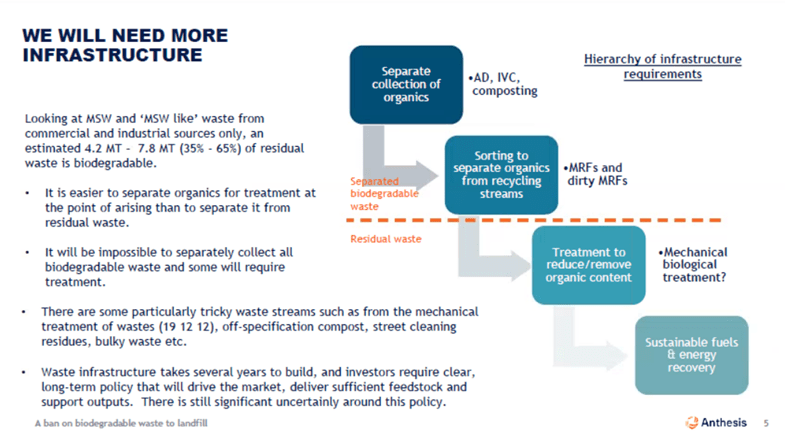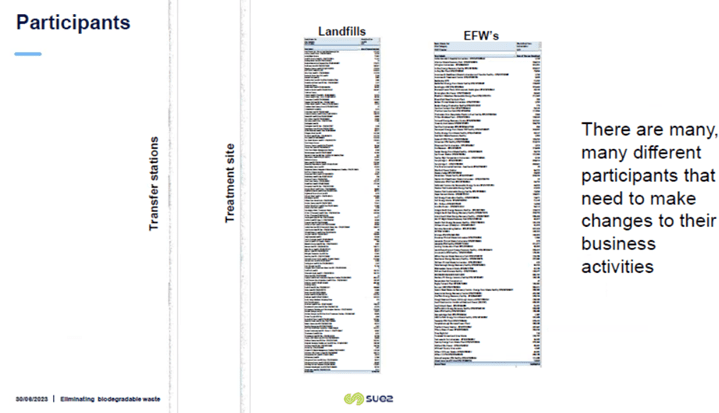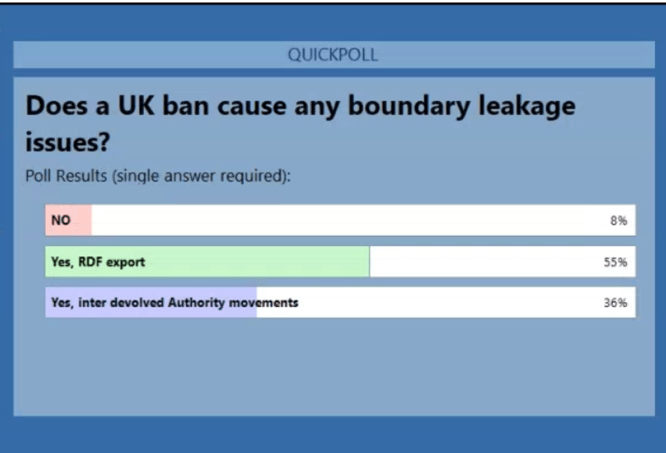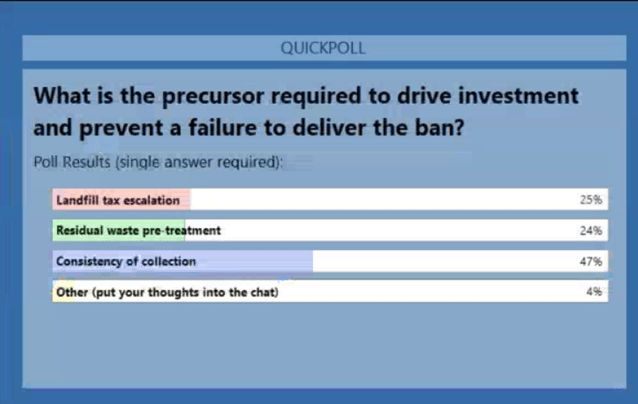Eliminating biodegradable waste from landfills in the UK
11th July 2023
Following our recent webinar on ‘Eliminating biodegradable waste from landfills in the UK’, Niamh Yates, Communications Intern at SUEZ recycling and recovery UK, shares her thoughts and takeaways from the session.
Earlier this year Defra announced that they will be undergoing a consultation which requests feedback, data and evidence on how we can achieve the near elimination of biodegradable waste disposal in landfills from 2028. This goal is ambitious because it is a complex, multifaceted topic, and there are obstacles to achieving it in a short time frame. In our latest webinar, chaired by Stuart Hayward-Higham, Chief Technical Development and Innovation Officer at SUEZ, we discussed the challenges and opportunities surrounding disposing of organic and food waste effectively. Simone Aplin, Technical Director from Anthesis, shared her thoughts on instituting a ban on biodegradable waste to landfill.
Simone began by explicitly voicing her support for a ban but emphasised the urgency to act quickly to reduce biodegradable waste to landfill. She stated that while there have been significant improvements in reducing landfill over the past 25 years, there is still a long way to go and using biodegradable waste effectively and sustainably is very important – this is especially true because an estimated 35% to 65% of residual waste is biodegradable.
With such a high percentage of waste being biodegradable, this brings with it the challenge of diverting high volumes of waste. There are up to 7.8 million tonnes of biodegradable landfill which would require diversion – looking at food waste alone, there are 2.3 million tonnes of food waste to divert which would require up to 80 facilities to process.
As a result, it’s a mammoth task to install the required infrastructure in good time. Simone suggested there are ways to ensure that these are in place in time, for example, by working to gain investor confidence to stimulate investment.

Anthesis – Hierarchy of infrastructure requirements
Simone also pointed to other solutions to reduce biodegradable waste going into landfill, highlighting the success of the landfill tax which made EfW (energy from waste) cheaper and more efficient when it was installed. She suggests that a new middle rate of tax could be implemented with the aim of achieving similar results. There are, however, challenges with this as it would be complex and difficult to regulate.
There are also methods which could work in combination with other policies such as an emissions trading scheme focused on carbon, which would help to reduce anthropogenic carbon levels.
The take home message is that there are several options which could support the reduction in biodegradable waste going to landfill, but there are also challenges to ensuring that any policy changes are delivered in a balanced way and are not vulnerable to criminal exploitation.
When asked by the audience if food waste is being disposed of more, Simone explained that whilst 163 local authorities have separate food waste collections, there are still 167 authorities which do not, so there is still much progress to be made.
The audience also posed the question to Simone on whether the middle rate of tax is too gentle. In response, Simone explained that we must look wider than this, moving untreated waste from EfW for example. It’s very important that we remove as much plastic as possible from landfill to meet the goals of net zero.
When quizzed on the issue of burning organic waste, Simone stated that food waste going into landfill is more problematic than organic because it emits more methane when burned. There are better uses for food waste and organic waste than EfW.
Stuart also emphasised that it’s a challenging task for Defra to consult hundreds of stakeholders and implement the building of structures for disposing of biodegradable waste in such a short time frame.
He compiled a list of groups that would be required to change their business activities:

He explained that this, in combination with a 2024 General Election, may make it difficult to find sites and get them commissioned in time for 2028.
Stuart also suggested that there are challenges with data collection as government agencies have conflicting statistics. For example, HMRC and Defra have differing predictions on inputs.
There is also a requirement to do more than tax, there needs to be overarching preparations to remove organic and food waste from landfill, for example, consistency between policy across the nation and investing before any policy comes into force.
The audience were asked whether a UK ban on recycling exports would cause boundary leakage, 55% of people voted ‘Yes, RDF export’, 36% voted ‘Yes, inter-devolved authority movements’ and only 8% voted ‘No’.

To conclude the webinar, the audience were given a final poll which asked, ‘What is the precursor required to drive investment and prevent a failure to deliver the ban?’ Forty-seven percent answered ‘consistency of collection’, 25% said ‘landfill tax escalation’, 24% were in support of ‘residual waste pre-treatment’ and 4% said ‘other’.

Simone agreed with much of what the audience voted for and concluded that a combination of these would be useful, whilst Stuart suggested that residual waste pre-treatment was his preferred option.
To summarise, while there is enthusiasm for dramatically reducing biodegradable waste going to landfill, Defra’s goal of doing this by 2028 is challenging. With sufficient investment, infrastructure and policy, we will be able to meet their goal which will be excellent progress in moving towards a circular economy in the UK.
Watch the full webinar session on Eliminating biodegradable waste from landfills in the UK here.
Tweet
